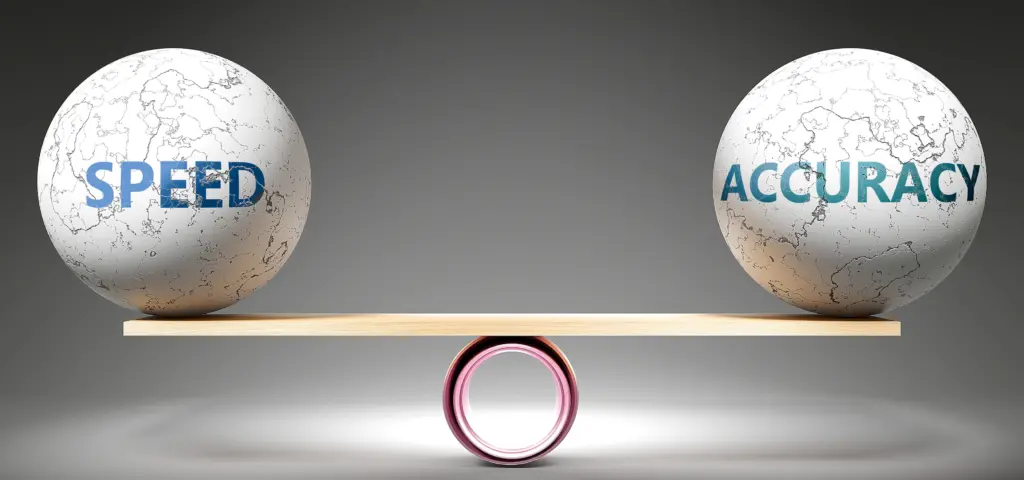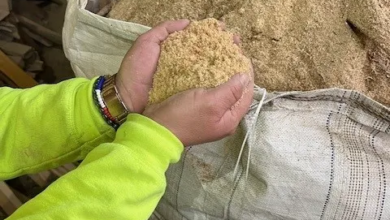What is the accuracy rate for your team in its processes from start to finish? The title this month is probably a combination of hearsay but could be a paraphrase of a quote by Wyatt Earp. An iconic lawman who was immortalized in television, popular movies such as “Wyatt Earp” (1994) and “Tombstone” (1993), and countless books, there is no shortage of what he had to say about gunfighting.
Wyatt Berry Stapp Earp was an American Old West lawman and gambler who took part in the infamous thirty-second gunfight at the O.K. Corral. Although he had a dubious background in Dodge City, Deadwood, and Tombstone, his legendary exploits as a buffalo hunter, brothel and saloon owner, miner, and even a boxing match referee molded his persona. A flattering, posthumous biography added to his reputation as a fearless lawman but there is little doubt that Earp was tough and deadly. He was extremely lucky to have survived to 80 years of age and lived and experienced movies and early 1920s Hollywood.
So, what is the connection between Wyatt Earp’s quote and our industry? We must go back to 1964. This was the year my maternal grandfather passed away. I quickly asked my grandmother for the one thing that I saw mounted to the wall behind his desk at his Marfa, Texas, car dealership. It was a glass and wooden shadow box display of a working, full-scale replica Colt .45-caliber revolver with a sepia-toned photo and brief description of the life of Wyatt Earp mounted to a burlap background. I had been transfixed by this oddity as early as I could remember.
From 1964, until it was broken in an attic fall during a move in 2017, it adorned many walls at my homes and businesses with pride. My grandfather won it in a poker tournament in 1960 (it even had a bronze plaque titled “Top Gun Trophy – 1960”). I never realized the irony of its acquisition until the 1990s and the Wyatt Earp movies. Or that my future company would sell hundreds of plaques for schools and historic sites around Texas.
In 2014, an auction of memorabilia tied to Earp drew more than 6,400 online bidders and more than 400 collectors to a facility in Scottsdale, Arizona. Descendants of Earp say the actual Colt .45-caliber revolver likely used in the O.K. Corral gunfight sold to a phone bidder in New Mexico for $225,000, far exceeding the pre-auction estimated high value of $150,000. It was the one time I wished I could have been the winning bidder — and had lots of disposable income.
 I have chronicled in previous articles that in 2006, my wife, Nita, and I purchased an existing sign and graphics company founded in 1988 in Tyler, Texas. That year I had already been in the sign industry for 21 years and had been blessed to work for many leading custom production and architectural branding firms in sales, sales management, and marketing.
I have chronicled in previous articles that in 2006, my wife, Nita, and I purchased an existing sign and graphics company founded in 1988 in Tyler, Texas. That year I had already been in the sign industry for 21 years and had been blessed to work for many leading custom production and architectural branding firms in sales, sales management, and marketing.
After our due diligence and great timing (the period known as the “Great Moderation” came to an end when expansion and housing began declining in 2006) right after we closed on the sale. By 2008 we were in a recession and fighting to stay alive and relevant. The next nine years defined and shaped our lives as entrepreneurs, managers, and business owners.
The former owner, over nine years of his ownership, had developed a business strategy of speed over everything. He had come out of the staffing industry as a franchisee and apparently recruiting and workforce solutions were driven mostly by a sense of urgency. Those who provided temporary and permanent help quickly were the winners. The fastest providers were the ones who won the most placements and generated the most income.
This approach worked great with general contractors or those who waited until the last minute to order a sign, plaque, banner, screen-printed T-shirt, or interior American Disabilities Act room sign. Sadly, speed was so revered that seven out of 10 projects had to be redone because they were wrong. That is a 70% error rate! At $2.1 million in revenue per year, that was a staggering loss of time, money, efficiency, and just plain demoralizing. I had seen 5% and as much as 12% in manufacturing error rates during my career to that point. Our immediate goal was to get it to 15%.
How did we find out the error rate was so high? We noticed after an initial asset inventory of large quantities of post-hole diggers, ladders, multiple tools (over 50 hammers), and countless drills, fasteners, etc. With two teams of installers, we quickly found out that the owner was in such a haste to send out a crew, that they’d leave unprepared and had to buy what they needed at the local Lowe’s or Home Depot to complete an installation.
He thought it was the cost of doing business because he believed time was money. That is true, but not if you are taking all your profit to add to a growing equipment inventory and adding labor and materials to correct 70% of all projects. Your lack of planning and commitment to quality improvement and efficient processes can put you into bankruptcy very quickly.

We learned that being fast was fine, but accuracy was final. And we started the arduous learning, culture-bending process of “being slow in a hurry.” We had to reeducate each employee with a new appreciation of doing it right the first time, on time. We emphasized this approach from my favorite basketball coach, John Wooden, on a banner on our shop wall: “If you don’t have time to do it right, when will you have time to do it over?”
During my early mass-production sign program years from 1988-2005, I was privileged to work with national accounts in the automotive, fast food, financial, and petroleum industries. I got to see new cars before the public saw them and sat in on marketing strategy meetings with new food products that would become staples in a late-night drive-through.
Guess what the biggest customer complaint was/is at most fast-food restaurants? Order accuracy and mix-ups. Long wait times can be a complaint but they are usually not as important as getting a correct order. Millions of dollars have been spent on this chief issue over the last 35 years, including training and digital menus that read back your order, to employees standing in your lane taking your order manually. Chick-fil-A must be on the right track; there is always a long line. What if the fast-food people did it right the first time, on time? In your shop, are you doing it right the first time, on time?
Metrics are important. I challenge you to measure your error rate and focus on it. If you can get it to 5% or lower, you’ll be amazed at how your revenue and your profits will increase. How does that affect more revenue? More on that later. When you redo and rework a project because it is wrong, you must add more labor and additional materials; those costs are easy to measure and bite into your profits on that job. You might even have to come out of pocket just to finish the rework on a job gone wrong.
But you have an insidious, invisible thief that robs you of money: we called it “the lost opportunity cost.” This is the time you are spending on redoing a job that you can never recover, that could have been used to do another job, make a new sale (increase your revenue), create a quality improvement, make a process evaluation/ change, work on your self-improvement, employee training, meet with a vendor, etc. So, time is money — but not quite like most people think.
If every step in your process is correct and without error, you will never need a quality control inspection. Quality will be built into your product in the first place and accuracy will rarely be in question.
Over our years of business, we learned some key initiatives that changed our trajectory and success:
- Improve constantly
- Institute training on the job
- Create a culture of leadership
- Break down barriers between departments so that they all work as a team
- Hire people with pride in workmanship
- Institute a vigorous program of education and self-improvement
- And one of the most valuable: learn to be slow in a hurry





